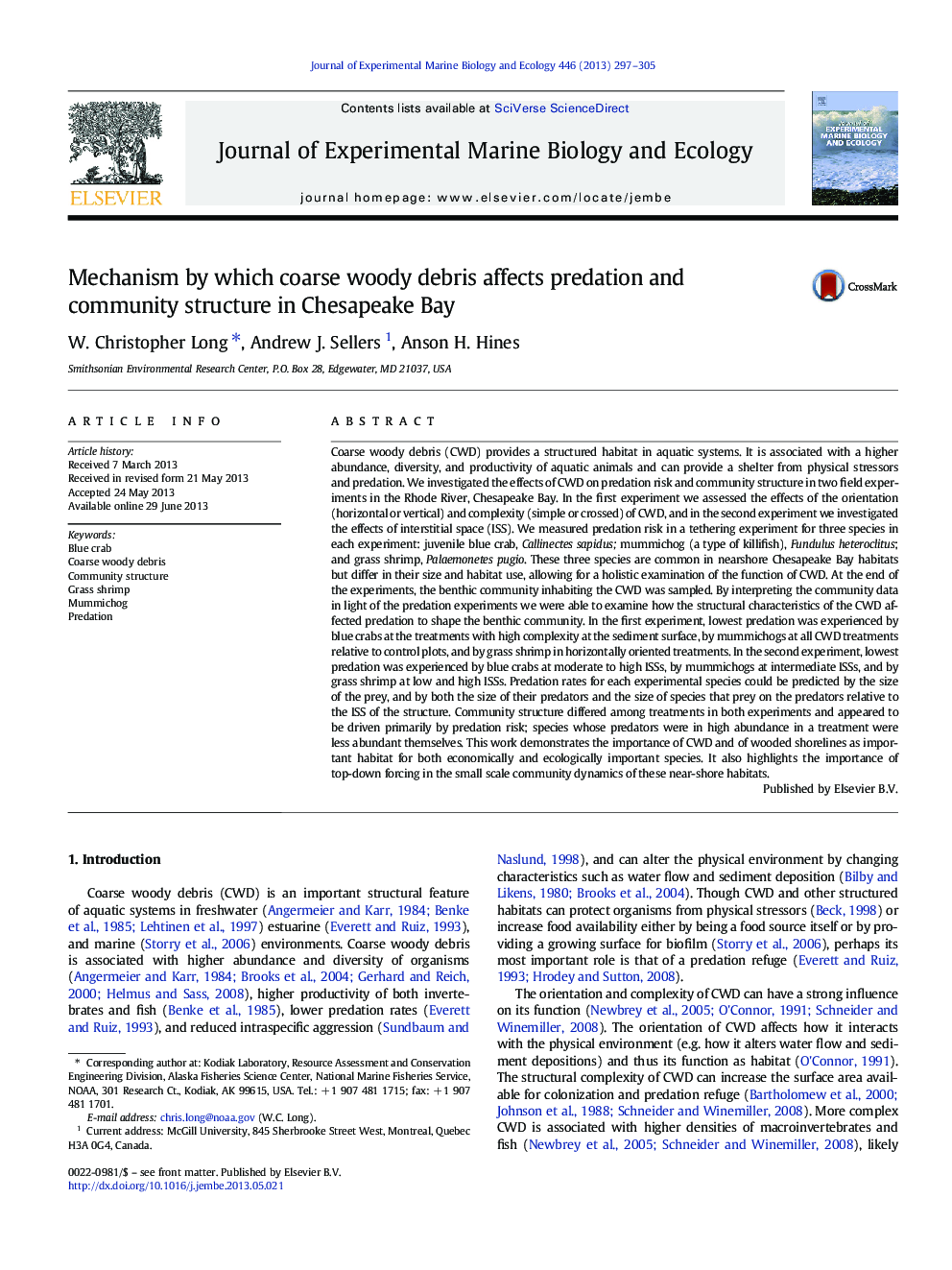| کد مقاله | کد نشریه | سال انتشار | مقاله انگلیسی | نسخه تمام متن |
|---|---|---|---|---|
| 4395735 | 1618429 | 2013 | 9 صفحه PDF | دانلود رایگان |

• We examined how coarse woody debris (CWD) affects predation and community structure.
• Juvenile blue crabs, mummichogs, and grass shrimp were used a prey species.
• Predation risk varied with species and the complexity and orientation of the CWD.
• Predation risk varied with prey size, predator size, and the interstitial space.
• Community structure was driven by predation risk indicating top-down control.
Coarse woody debris (CWD) provides a structured habitat in aquatic systems. It is associated with a higher abundance, diversity, and productivity of aquatic animals and can provide a shelter from physical stressors and predation. We investigated the effects of CWD on predation risk and community structure in two field experiments in the Rhode River, Chesapeake Bay. In the first experiment we assessed the effects of the orientation (horizontal or vertical) and complexity (simple or crossed) of CWD, and in the second experiment we investigated the effects of interstitial space (ISS). We measured predation risk in a tethering experiment for three species in each experiment: juvenile blue crab, Callinectes sapidus; mummichog (a type of killifish), Fundulus heteroclitus; and grass shrimp, Palaemonetes pugio. These three species are common in nearshore Chesapeake Bay habitats but differ in their size and habitat use, allowing for a holistic examination of the function of CWD. At the end of the experiments, the benthic community inhabiting the CWD was sampled. By interpreting the community data in light of the predation experiments we were able to examine how the structural characteristics of the CWD affected predation to shape the benthic community. In the first experiment, lowest predation was experienced by blue crabs at the treatments with high complexity at the sediment surface, by mummichogs at all CWD treatments relative to control plots, and by grass shrimp in horizontally oriented treatments. In the second experiment, lowest predation was experienced by blue crabs at moderate to high ISSs, by mummichogs at intermediate ISSs, and by grass shrimp at low and high ISSs. Predation rates for each experimental species could be predicted by the size of the prey, and by both the size of their predators and the size of species that prey on the predators relative to the ISS of the structure. Community structure differed among treatments in both experiments and appeared to be driven primarily by predation risk; species whose predators were in high abundance in a treatment were less abundant themselves. This work demonstrates the importance of CWD and of wooded shorelines as important habitat for both economically and ecologically important species. It also highlights the importance of top-down forcing in the small scale community dynamics of these near-shore habitats.
Journal: Journal of Experimental Marine Biology and Ecology - Volume 446, August 2013, Pages 297–305